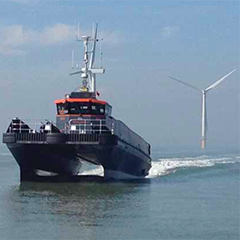What’s best? To outsource wind farm construction, O&M and decommissioning capabilities or to bring them in-house? And what might the model for client-supplier relationships look like for the next decade of wind energy? We examined the options, courtesy of one rapidly-expanding operator…
If you haven’t already heard of CWind, the Colchester, UK-based offshore wind services provider, you may want to pay close attention to this fast-growing company as it expands its already impressive capabilities in a textbook example of the next major step for service outsourcing.
A multi-tasking challenge
Wind farm planning, construction, operations and decommissioning process isn’t the easiest of engineering feats. A large number of tasks, each with myriad activities and steps, need to be carried out in parallel or consecutively, each executed to perfection and with maximum cost-efficiency. Each task requires focused expertise, yet the overall project also demands that individual tasks are grouped and coordinated in executable packages.
Given the diverse array of skills and bodies of competencies required to perform these tasks, wind farm developers and operators tend to favour outsourcing most of them to contractors who offer one or a few of the services needed to execute the task. Typically therefore, coordination is handled by different contractors – and different people within those contractors. The result is a multiplicity of interfaces and hand-over steps, adding to the risk of delays, cost-spillovers and other complications.
Industry services game-changer
In steps a contractor like CWind. The company, which comprises some 300 technical experts, a seemingly limitless number of contractors and a fleet of more than 20 purpose-built vessels, has built a solid track record during its five-odd years of existence having supported the successful delivery of over 26 offshore wind farms.



























